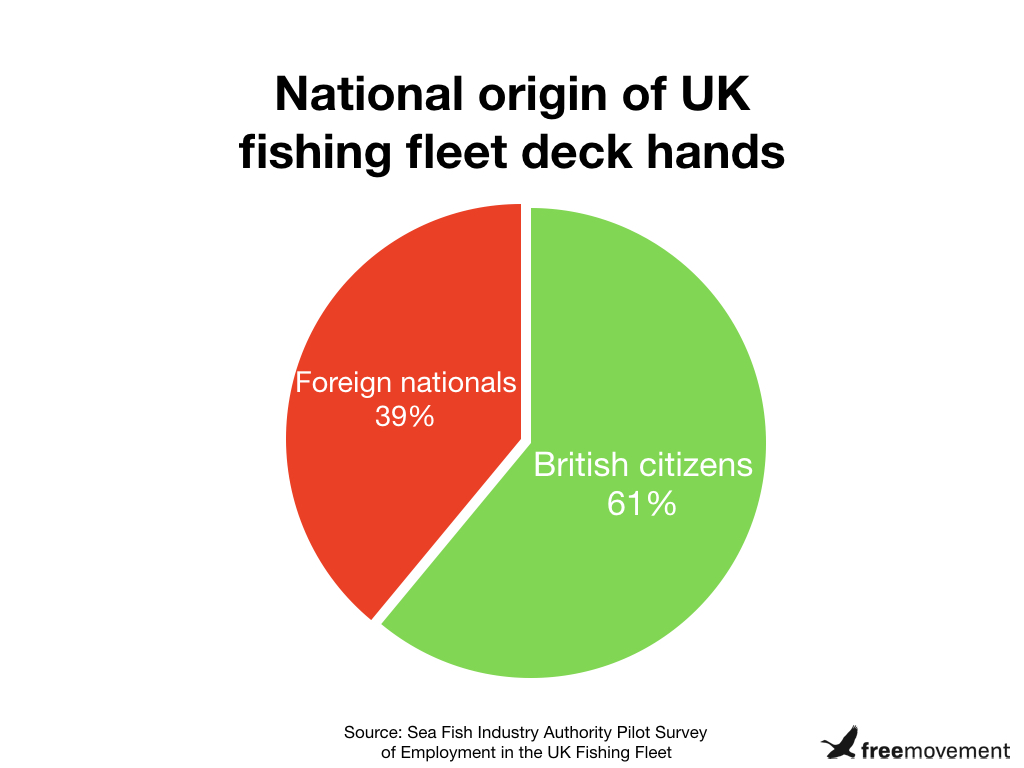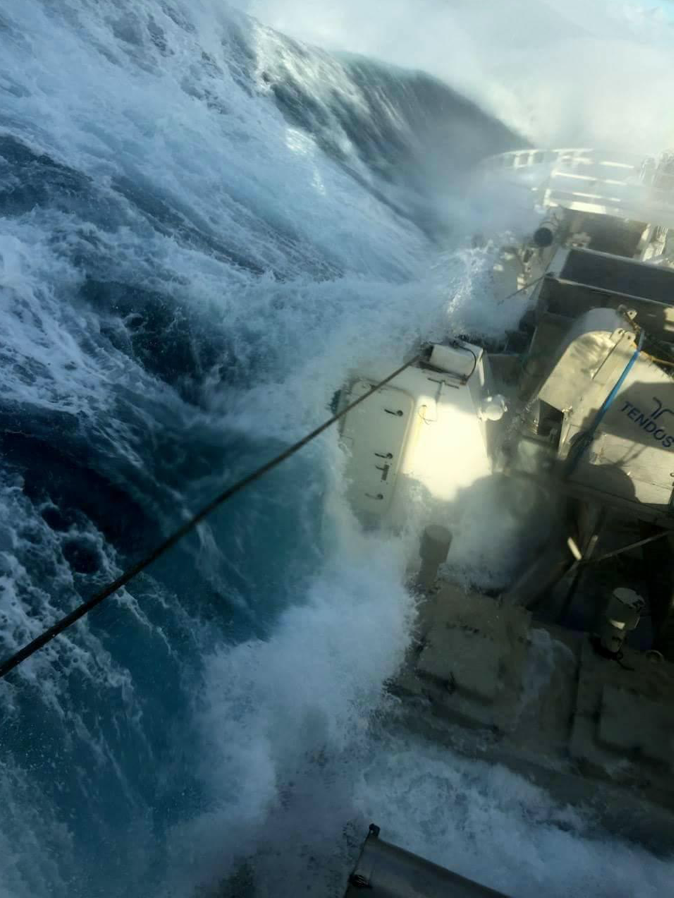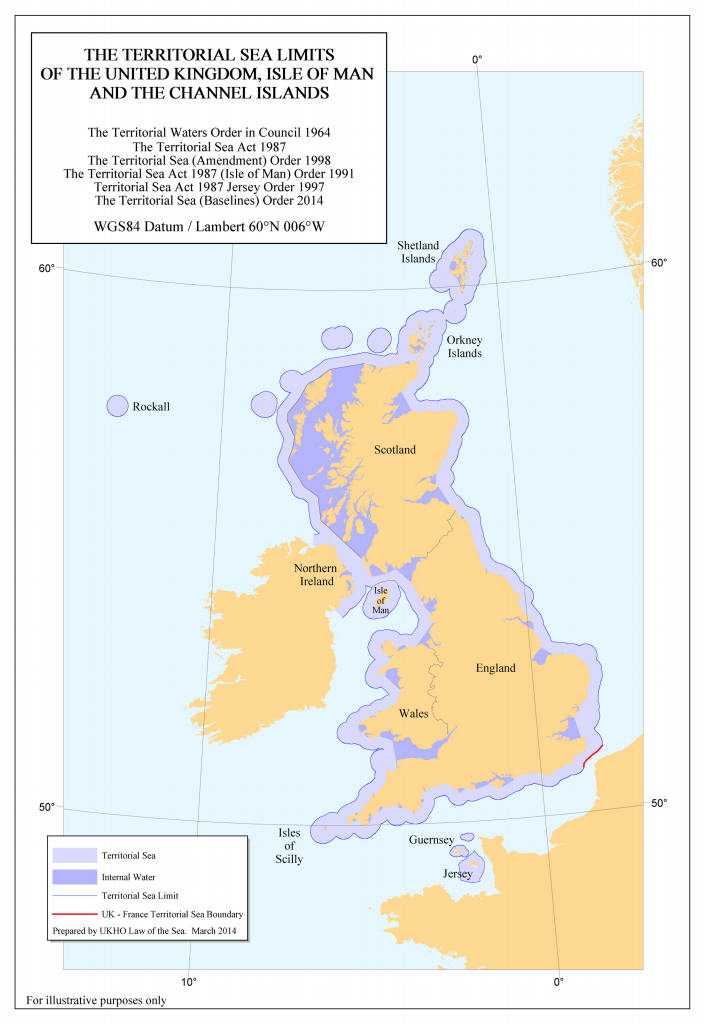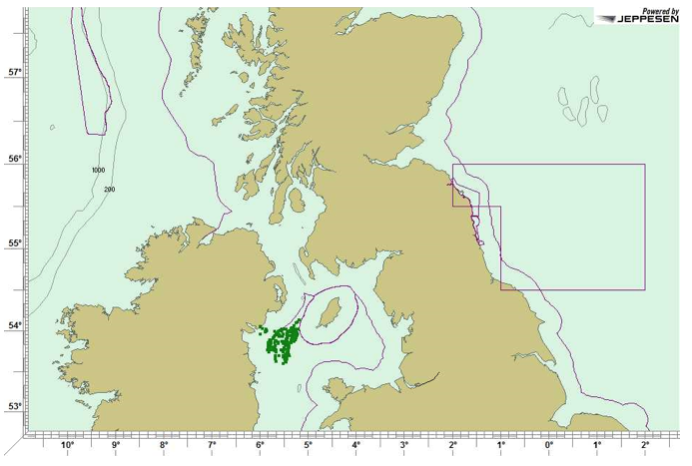- BY Darren Stevenson

Briefing: the immigration rules covering foreign citizens in the UK fishing fleet
THANKS FOR READING
Older content is locked

A great deal of time and effort goes into producing the information on Free Movement, become a member of Free Movement to get unlimited access to all articles, and much, much more
TAKE FREE MOVEMENT FURTHER
By becoming a member of Free Movement, you not only support the hard-work that goes into maintaining the website, but get access to premium features;
- Single login for personal use
- FREE downloads of Free Movement ebooks
- Access to all Free Movement blog content
- Access to all our online training materials
- Access to our busy forums
- Downloadable CPD certificates
Table of Contents
ToggleOne of the interesting aspects of the ongoing national debate about Brexit is the prominent position occupied in the debate by the UK fishing industry. I would venture to say that maritime immigration control is a topic infrequently encountered even by Free Movement readers, and with the current focus on the fishing industry, I thought it might be an interesting area to cover.
Foreign workers in the UK fishing industry
The UK fishing fleet relies to varying degrees on non-UK crew to serve on fishing vessels. It recruits both EEA and non-EEA nationals.
The Sea Fish Industry Authority is a non-departmental public body sponsored by the UK Department for Environment, Food and Rural Affairs and known simply as Seafish. It undertakes, as part of its functions, frequent studies of the industry and reports regularly.
In 2017 Seafish completed a Pilot Survey of Employment in the UK Fishing Fleet.
The survey gathered data on 313 UK fishing vessels and 914 jobs. These represented 7% of active vessels and 7% of jobs in the UK fishing fleet in 2016. The survey found that non-UK workers accounted for 39% of all deckhands.

The findings in the Seafish survey broadly correlated to research published by Marine Scotland in previous years and a survey carried out by the industry to include in a submission at the end of last year to the Migration Advisory Committee. There is actually quite a lot of background detail when considering the statistics, to do with the types of vessels surveyed and regional differences, but in summary both EEA and non-EEA crew serve in significant numbers on fishing vessels, particularly on prawn trawlers.
Fishermen not skilled enough for the Points Based System
Pre-Brexit, EEA national crew do not really present an issue in immigration law terms; they presently enjoy free movement rights. EEA nationals can come to the UK to work on a fishing vessel without much difficulty.
The position in relation to non-EEA nationals is interesting and somewhat unusual.
As is generally understood, under the Points Based System non-EEA migrant workers may not be engaged by an employer to perform “lower skilled work” in the UK. As the Migration Advisory Committee stated in its call for evidence last year:
Currently, the UK migration system does not have an explicit work route for lower-skilled workers from outside the EEA, because the view has been taken that free movement ensures a sufficient supply from within the EEA. It is important to understand that occupations below NQF6 cover a very wide range of occupations, from jobs that are traditionally thought of as unskilled to jobs that require a considerable level of training. These differences in skill levels might be important because a shortage of unskilled workers in a particular sector might reasonably be resolved by recruiting from other sectors within the domestic labour market, while a shortage of workers in an occupation that requires considerable training might only be resolvable in the short-term by the use of migrant labour.
As this recognises, “lower skilled” work can encompass jobs requiring considerable training and professionalism. Yet a review of the current list of occupations graded by skill level, at Appendix J of the Immigration Rules, reveals that many roles are not sufficiently “skilled” to be sponsored under the Points Based System. The minimum skill level is Regulated Qualifications Framework Level 6, with some limited exceptions.
Examples of occupations which are not regarded as being sufficiently skilled include: “Ship and hovercraft officers”, “Health and safety officers”, and even “Public services associate professionals, Civil servant”. Essentially all civil service grades below than Assistant Director (G7) level are not regarded sufficiently skilled to be sponsored. Staff at these grades make up around 89% of the total civil service workforce according to the Institute for Government , but I digress.
Crewing a fishing vessel, as viewers of any number of entertaining TV shows on the subject will recognise, is tough, arduous work, involving complex and dangerous machinery, often in horrendous weather conditions. It is not an easy job to do, nor is it easy to attract workers to serve as crew. The picture below was taken from a Northern Irish trawler in rough seas (gulp).

Nevertheless, under Appendix J, serving as crew on a fishing vessel is not a “skilled” enough occupation to support a visa application to work in the UK.
So how then are non-EEA crew engaged on vessels operating from UK ports as the statistics show? The key is section 8 of the Immigration Act 1971.
Immigration control exemption for seamen operating in territorial waters
Section 8 provides as follows:
Where a person arrives at a place in the United Kingdom as a member of the crew of a ship or aircraft under an engagement requiring him to leave on that ship as a member of the crew, or to leave within seven days on that or another aircraft as a member of its crew, then unless either—
(a) there is in force a deportation order made against him; or
(b) he has at any time been refused leave to enter the United Kingdom and has not since then been given leave to enter or remain in the United Kingdom; or
(c) an immigration officer requires him to submit to examination in accordance with Schedule 2 to this Act;
he may without leave enter the United Kingdom at that place and remain until the departure of the ship or aircraft on which he is required by his engagement to leave.
In summary, a crew member of a vessel, arriving at a “place” in the UK, under an engagement requiring him to leave on that ship, can enter the UK without the leave of an immigration officer (apart from the exceptions listed). This is a sensible provision, since it sidesteps the need for our overstretched Border Force to process leave to enter decisions for every single non-EEA crew member arriving throughout the UK on a daily basis on all manner of vessels (and aircraft), upon which they then intend to depart. The 1971 Act has a number of provisions within Schedule 2 which address an immigration officer’s powers when crew do not in fact leave on their vessel, or there is a reasonable suspicion that they will not.
The legitimacy of the fishing industry’s reliance on this section to engage non-EEA crew was confirmed to Parliament in 2012 by the then Minister for Immigration, Mark Harper MP, in a speech which provides a good deal of background detail.
In terms of the statutory regulation of immigration control for fishing crew, section 8 stands somewhat forlornly. It is a simple enough section, but much is unexplained. For example if a crew member arrives with his vessel can he stay indefinitely until the vessel departs? What about a crew member arriving in the UK to join a vessel: does he fall under section 8?
In fact on the second point the Home Office cannot make its mind up. In the relevant policy, Seamen Modernised Guidance, it says that section 8 does not cover the arrival of a crew member to join their vessel. But in the Immigration Rules, at Appendix V, and in the Entry Clearance guidance, it is stated that section 8 does apply.
Indeed an extremely significant part of the regulatory structure rests upon the Modernised Guidance document, from which the Home Office extracts all manner of operational principles. The difficulty to my mind is that following the decisions in Alvi and Munir at the Supreme Court, it is generally undesirable and potentially unlawful to seek to regulate substantive matters by way of guidance rather than law.
How does the system work in practice? Nationals of states that are signatories to the Seafarers’ Identity Documents Convention of 1958 (ILO108) do not require prior entry clearance and may travel to the UK and seek entry on arrival. For nationals of non-EEA states that are not signatories to the convention, the crew member seeks a “visa-joining ship” to enter the UK to join their vessel. This would include the Philippines, and Filipino nationals make up a significant proportion of non-EEA crew on vessels.
Once the vessel has been joined the crew members’ subsequent arrivals and departures on the fishing vessel are covered by section 8. This means that once on the vessel and engaging on regular fishing voyages, crew members effectively re-enter the UK on their return from a fishing voyage without the requirement to have leave. They therefore carry out their contracts with a quite unusual immigration status — albeit that other beneficiaries of section 8, such as members of diplomatic missions, or members of certain foreign armed forces serving in the UK, enjoy similar exemptions.
That is not the end of the story however, and it has a lot to do with this map.

The pale blue border represents the territorial waters of the United Kingdom, Isle of Man, and the Channel Islands. This map is relevant because the Modernised Guidance imposes a very particular restriction on the use of section 8, namely that fishing vessels with non-EEA crew do not fish inside UK territorial waters. The frequency which a vessel may operate inside territorial waters is defined within the document, but the syntax varies, in the same document, in that way which lawyers love. Operationally Border Force and UK Visas and Immigration have interpreted the guidance as intending to prohibit fishing inside 12 miles, but with some limited flexibility if a vessel has operated within 12 miles for other reasons.
Much of the UK’s fishing fleet operates in the north east of Scotland. Vessels operating from these ports, if they wanted to fish outside territorial waters, need to sail 12 miles out to sea in most directions and would then be outside the UK’s territorial waters.
By contrast, a vessel operating from Lochinver on the north west coast of Scotland might need to sail 30 miles or more to leave territorial waters. Even then the vessel would be in the Atlantic Ocean, which is a far more challenging and dangerous area, generally, than the relatively shallow North Sea.
Of even more importance is that prawn trawlers, for example, operate on the basis that they drag a trawl net across the seabed to catch prawns, so only certain parts of the sea can be fished. The sea of the west coast of Scotland, containing the Sea of the Hebrides, the Little Minch and the Minch, is a particularly good fishing ground for langoustines, but these areas are all within territorial waters. So too is most of the sea around Northern Ireland. Prawn trawlers have some of the highest demand for non-UK crew.
This then creates a key problem for the industry. In some operational areas it is possible to engage non-EEA crew and in some it is not. The difference is down to geography.
This has always struck me as a somewhat unique issue in UK immigration terms. Regional variation is not something which is currently part of our system, yet it is a fact of crewing regulation. The UK Border Force regularly undertakes operations to remove crew serving on vessels found to be operating to a prohibited degree in territorial waters.
Indeed a significant aspect of the decision-making in this field focuses on the Vessel Monitoring System (VMS). This is a system installed on larger fishing vessels which tracks their movements in a similar fashion to GPS. It was primarily designed to regulate fishing activity, but now forms a part of the decision-making process in immigration law. Often decisions at an entry clearance post on whether crew will be granted a visa, or from Border Force on whether crew will be removed, will depend on the frequency which a vessel has operated inside 12 miles.
As a regulatory mechanism, besides the geographical variation, this has many failings. For one thing, fish move. Weather conditions and sea states can often rapidly deteriorate and so shelter often needs to be sought. Vessels also clearly need to transit to a greater or lesser extent through territorial waters, but at least always to some extent to enable them to return to home ports and reach fishing grounds. Skippers may also want to test new machinery or engines without sailing far from port. Often VMS data which suggests fishing inside 12 miles needs to be explained by evidence about why the operation was necessary. Indeed data is often filtered these days to exclude speeds at which a vessel could not be fishing, to provide a more accurate picture.
The restriction on operations within 12 miles of the shore often dictates operational patterns by vessels. Indeed returning to the map above, if one looks at the sliver of sea between the Isle of Man and the east coast of Northern Ireland, one sees an area that is outside territorial waters. In fact it is arguable that this area of sea encompasses the territorial waters of the Isle of Man, and not the UK, as the guidance pertains to, but the authorities do not appear to consider this distinction operationally. That particular spot is now a popular one for fishing vessels and plots of VMS data will often show tight adherence to the shape drawn in the sea by the territorial water line. Below is a VMS plot from a Northern Irish vessel illustrating the point: the green dots reflect plots where the vessel was operating at under 5 knots, which is approximately trawling speed.

A similar pattern can arise beside the bubbles of territorial waters that surround the Orkney Islands and the Shetland Islands, as is shown in this plot (which is not filtered by speed, the tighter grouping of plots representing fishing activity):

Ability to recruit non-EU crew determined by geography
So vessels are required, if they want to engage non-EEA crew, to operate within these constraints. On their face, they may seem somewhat absurd, and there is often little practical difference between a trawler operating on the east coast of Scotland and the west coast of Scotland, except that one operator has the ability to engage non-EEA crew and the other does not.
Of course there are ongoing debates about the use of non-UK migrant labour to serve in “lower skilled” occupations. The perception amongst many vessel operators is that Filipino crew, for example, are generally extremely professional, skilled and committed.
But even if we were to accept that it is desirable from a public policy perspective to limit the engagement of non-EEA migrant labour performing lower skilled roles, the fishing industry because of its unique circumstances has a two track system. Some geographical locations are subject to restrictions, and some are not.
It is then a very difficult task to pursue a policy objective of encouraging recruitment from the UK labour force without splitting the industry. How can different regions fairly compete if subject to less liberal crewing rules than their competitors elsewhere in the country? Indeed for some locations such as the island of Barra on the west coast of Scotland (found at 42:E2 on the map above), which has a sizeable prawn trawler fleet, the territorial waters restriction on crew can have particularly severe consequences, as these remote locations suffer from a declining population. If there has to be geographical variation in migrant labour access, it might be better guided by this kind of metric.
As Brexit looms, a further difficulty arises. In recent weeks Professor Alan Manning of the Migration Advisory Committee suggested to MPs on that Brexit might affect lower-skilled EU workers coming to the UK. If it turns out that way, then this means that vessels operating within territorial waters will potentially lose a further valuable source of labour from the EU.
What would a fairer system look like?
This is an area ripe for reform. The current focus on migration policy might lead to sensible changes that properly consider the facts. The industry has long lobbied for change, and there is now broad agreement between maritime charities, industry groups and politicians that reform is needed.
What solutions exist? On one level it is easy to say that the territorial waters restriction could simply be lifted and the section 8 exemption utilised for all crew regardless of where their ships go fishing. But despite the unsuitability of using the 12-mile limit as the metric in deciding whether crew can be engaged, territorial waters do have a statutory significance that is carried over to many other aspects of regulation and law. It is probably right to say that the UK should have some kind of system in force to regulate what occurs in its own territory and that exempting migrant workers from immigration control is undesirable. Section 8 does at its core require a vessel to leave the UK’s waters to be engaged and this would be unsuitable for vessels operating entirely inside UK waters (indeed the guidance seeks to prohibit operators from just sailing outside 12 miles for a minute and then coming back inside to fish).
Therefore the focus turns to liberalisation within the Immigration Rules and policy, recognising that Brexit may well result in immigration restrictions having significance for both non-EEA and EEA crew.
Given the inherent focus within Tier 2 of the Points Based System on skill level as defined in an academic sense, it may be difficult to regulate crew through that system without fundamental change. Tier 3, which was intended for lower-skilled work and was never implemented (primarily because of the flow of lower skilled workers from the EEA) might provide a solution. The concept of sponsorship, and the principle that a potential employer must demonstrate that they can responsibly engage migrant labour is attractive, and would enable a degree of oversight and compliance, serving to protect crew.
Alternatively, the solution may lie outside of the Immigration Rules. As detailed by the immigration minister in 2012, the Home Office did actually grant a policy concession between 2010 and 2012 which enabled vessels fishing within territorial waters to engage non-EEA crew. Indeed a similar concession is currently in force, but only in respect of non-EEA nationals who are joining vessels engaged in the construction and maintenance of offshore wind projects in UK territorial waters.
Short of wholesale fundamental reform of our immigration system (which these days doesn’t look so unlikely) a further concessionary system may present the best approach. However such an approach is anathema to the Home Office, which has been determined to move away from the myriad of bespoke concessionary policies which used to exist and incorporate all that they can into the Points Based System (often they have to admit defeat and operate a concession, for example for sheep shearers).
As the example of commercial fishing demonstrates, it is often very difficult to provide an effective one-size-fits-all regulatory mechanism when dealing with complex industries with distinct characteristics. The hope is that the Windrush scandal may augur a new era in which the Home Office will properly engage with stakeholders to collaborate on sensible immigration policy. Certainly the government dogma that migration must be reduced whatever the cost seems to be coming under increasing scrutiny, and liberalisation is now a possibility.
